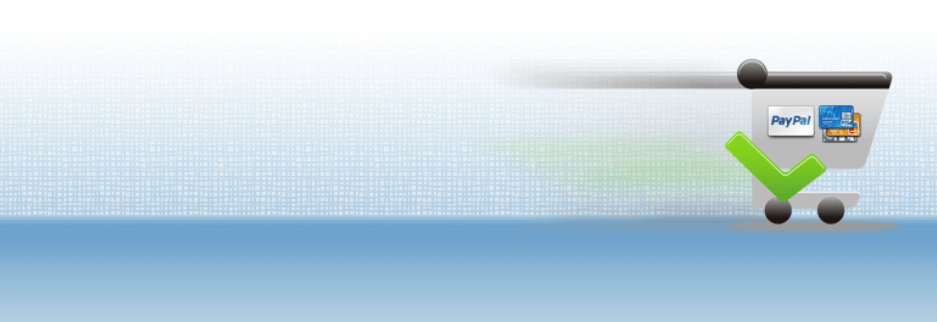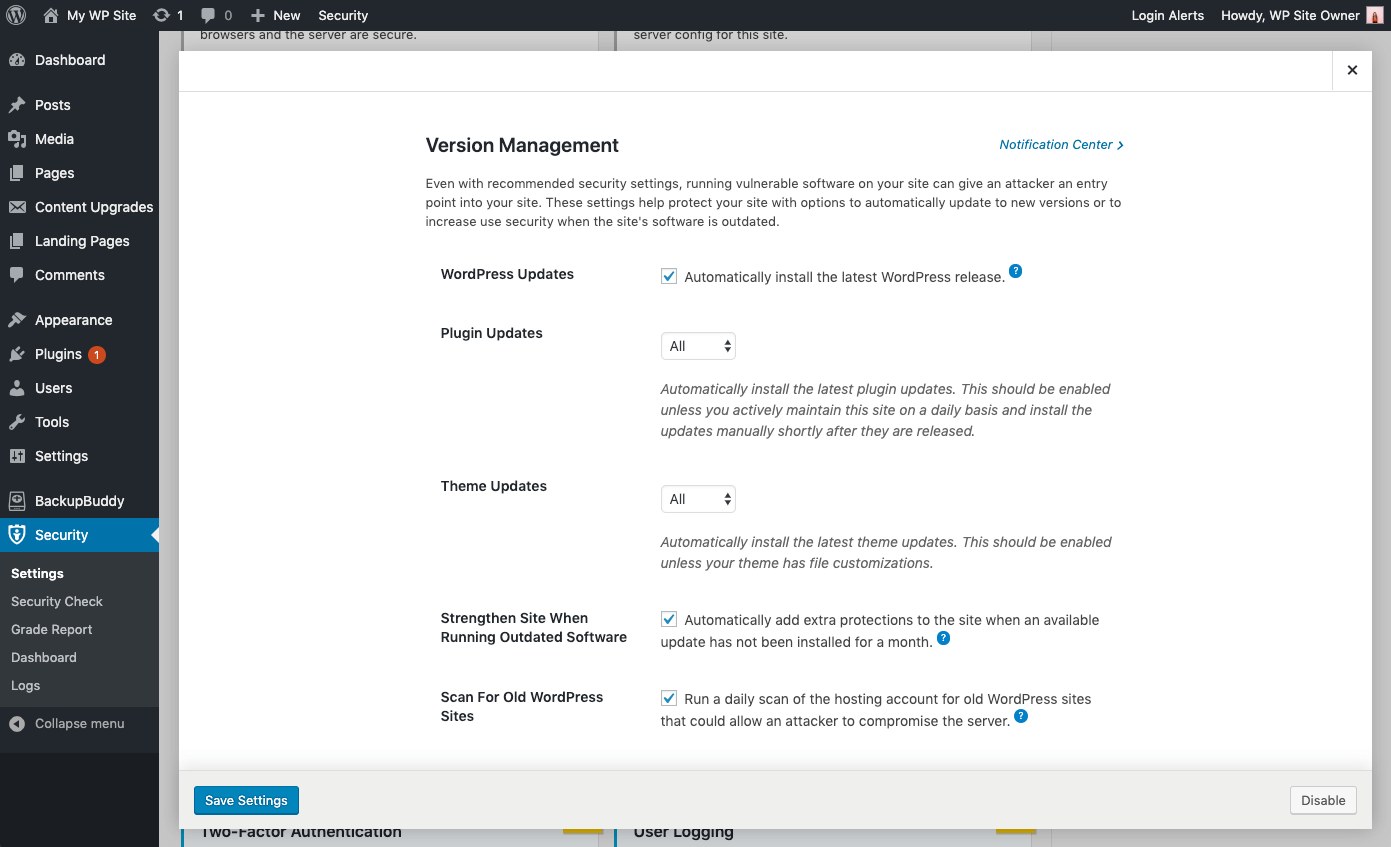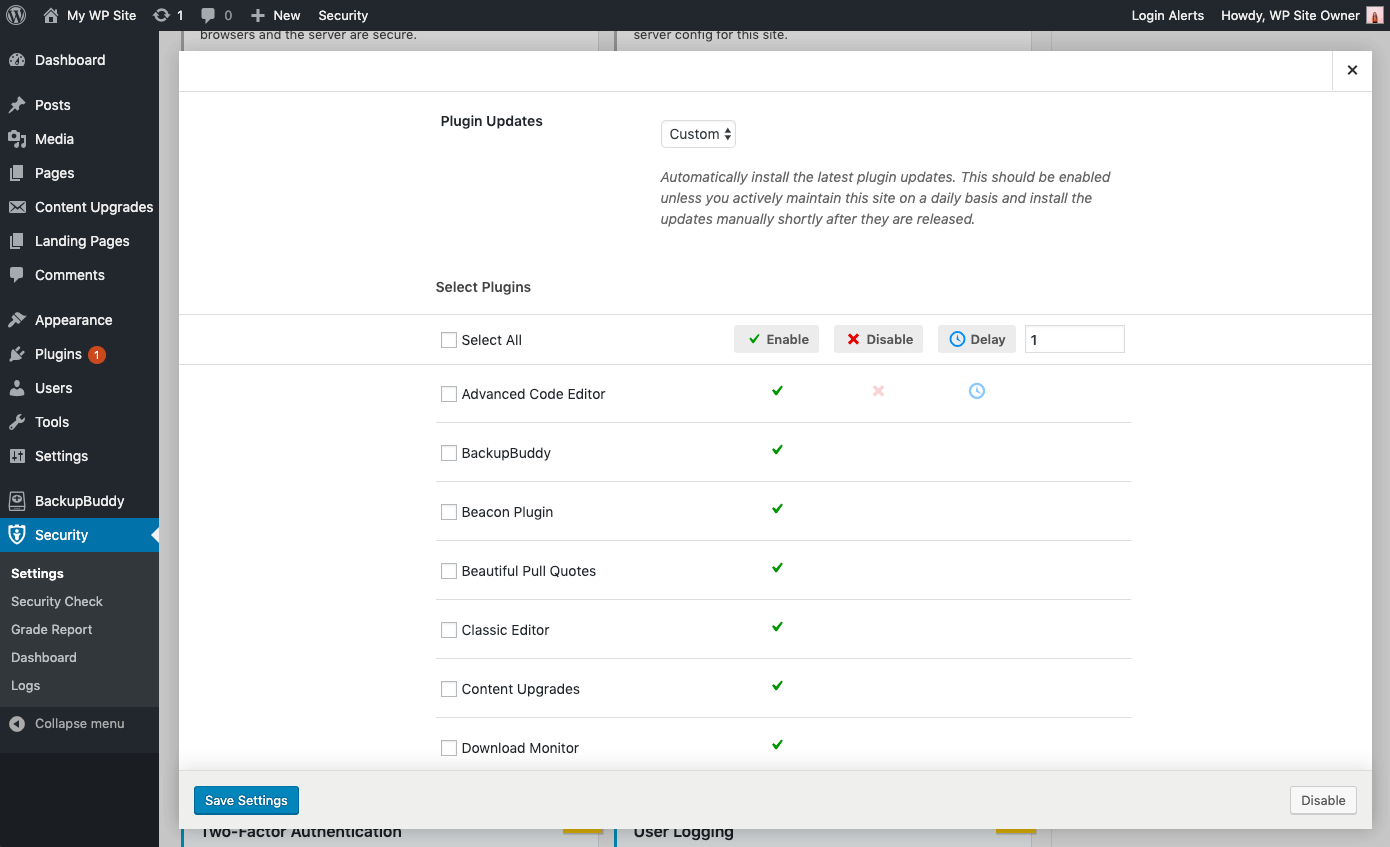WordPress Vulnerability Roundup: July 2019, Part 2
New WordPress plugin vulnerabilities were disclosed during the last half of July, so we want to keep you aware. We divide the WordPress Vulnerability Roundup into four different categories: 1. WordPress core 2. WordPress Plugins 3. WordPress Themes 4. Breaches From Around the Web * We include breaches from around the web because it is essential to also be aware of vulnerabilities outside of the WordPress ecosystem.

New WordPress plugin vulnerabilities were disclosed during the last half of July, so we want to keep you aware.
We divide the WordPress Vulnerability Roundup into four different categories:
 OneSignal – Web Push Notifications versions 1.17.5 and below is vulnerable to a Stored XSS attack.
OneSignal – Web Push Notifications versions 1.17.5 and below is vulnerable to a Stored XSS attack.
 All-in-One WP Migration versions 6.97 and below is vulnerable to an Authenticated Stored XSS attack.
All-in-One WP Migration versions 6.97 and below is vulnerable to an Authenticated Stored XSS attack.
 WPS Hide Login versions 1.5.2.2 and below has a bug that allows you to access the WordPress login page.
WPS Hide Login versions 1.5.2.2 and below has a bug that allows you to access the WordPress login page.
 Photo Gallery by 10Web version1.5.30 and below of the plugin is vulnerable to a SQL Injection.
Photo Gallery by 10Web version1.5.30 and below of the plugin is vulnerable to a SQL Injection.
 Email Subscribers & Newsletters version 4.1.7 and below of the plugin is to a SQL Injection.
Email Subscribers & Newsletters version 4.1.7 and below of the plugin is to a SQL Injection.
 Contact Form & SMTP Plugin for WordPress version 1.5.1 and below is vulnerable to a Cross-Site Request Forgery and HTML Injection attack.
Contact Form & SMTP Plugin for WordPress version 1.5.1 and below is vulnerable to a Cross-Site Request Forgery and HTML Injection attack.
 Everest Forms version 1.4.9 and below of the plugin is vulnerable to a SQL Injection.
Everest Forms version 1.4.9 and below of the plugin is vulnerable to a SQL Injection.
 Adaptive Images for WordPress version 0.6.66 and below of the plugin is vulnerable to a Local File Inclusion and Deletion attack.
Adaptive Images for WordPress version 0.6.66 and below of the plugin is vulnerable to a Local File Inclusion and Deletion attack.
 AdRotate Banner Manager version 5.2 and below of the plugin is vulnerable to an Authenticated SQL Injection.
AdRotate Banner Manager version 5.2 and below of the plugin is vulnerable to an Authenticated SQL Injection.
 Contact Form 7 Dynamic Text Extension plugin version 2.0.2.1 and below is vulnerable to a Cross-Site Scripting attack.
Contact Form 7 Dynamic Text Extension plugin version 2.0.2.1 and below is vulnerable to a Cross-Site Scripting attack.
 Blog2Social: Social Media Auto Post & Scheduler version 5.5.0 and below of the plugin is vulnerable to an SQL Injection.
Blog2Social: Social Media Auto Post & Scheduler version 5.5.0 and below of the plugin is vulnerable to an SQL Injection.
 Simple Membership version 3.8.4 and below is vulnerable to a Cross-Site Request Forgery attack.
Simple Membership version 3.8.4 and below is vulnerable to a Cross-Site Request Forgery attack.
 Advanced Contact form 7 DB version 1.6.1 and below of the plugin is vulnerable to a SQL Injection.
Advanced Contact form 7 DB version 1.6.1 and below of the plugin is vulnerable to a SQL Injection.
 Coming Soon Page & Maintenance Mode versions 1.8.0 and below is vulnerable to an Unauthenticated Stored XSS attack.
Coming Soon Page & Maintenance Mode versions 1.8.0 and below is vulnerable to an Unauthenticated Stored XSS attack.
 WordPress Ultra Simple Paypal Shopping Cart version 4.4 and below is vulnerable to a Cross-Site Request Forgery and File Type Check.
WordPress Ultra Simple Paypal Shopping Cart version 4.4 and below is vulnerable to a Cross-Site Request Forgery and File Type Check.
 Category Specific RSS feed Subscription version 4.4 and below is vulnerable to a Cross-Site Request Forgery and File Type Check.
Category Specific RSS feed Subscription version 4.4 and below is vulnerable to a Cross-Site Request Forgery and File Type Check.
 Appointment Hour Booking plugin version 1.1.45 and below is vulnerable to a Cross-Site Scripting attack.
Appointment Hour Booking plugin version 1.1.45 and below is vulnerable to a Cross-Site Scripting attack.


- 1. WordPress core
- 2. WordPress Plugins
- 3. WordPress Themes
- 4. Breaches From Around the Web
WordPress Core Vulnerabilities
No WordPress vulnerabilities were disclosed so far in July of 2019.
WordPress Plugin Vulnerabilities
Several new WordPress plugin vulnerabilities have been discovered this July. Make sure to follow the suggested action below to update the plugin or completely uninstall it.1. OneSignal – Web Push Notifications
 OneSignal – Web Push Notifications versions 1.17.5 and below is vulnerable to a Stored XSS attack.
OneSignal – Web Push Notifications versions 1.17.5 and below is vulnerable to a Stored XSS attack.
What You Should Do
The vulnerability has not been patched. Remove the plugin until the developers release an update with a patch.
2. All-in-One WP Migration
 All-in-One WP Migration versions 6.97 and below is vulnerable to an Authenticated Stored XSS attack.
All-in-One WP Migration versions 6.97 and below is vulnerable to an Authenticated Stored XSS attack.
What You Should Do
The vulnerability has been patched, and you should update to version 7.0.
3. WPS Hide Login
 WPS Hide Login versions 1.5.2.2 and below has a bug that allows you to access the WordPress login page.
WPS Hide Login versions 1.5.2.2 and below has a bug that allows you to access the WordPress login page.
What You Should Do
The vulnerability has been patched, and you should update to version 1.5.3.
Also, check out our The Top 5 WordPress Security Myths Debunked post. Changing the login URL isn’t as secure as you might think, and can cause more trouble than it’s worth.
4. Photo Gallery by 10Web
 Photo Gallery by 10Web version1.5.30 and below of the plugin is vulnerable to a SQL Injection.
Photo Gallery by 10Web version1.5.30 and below of the plugin is vulnerable to a SQL Injection.
What You Should Do
The vulnerability has been patched, and you should update to version 1.5.31.
5. Email Subscribers & Newsletters
 Email Subscribers & Newsletters version 4.1.7 and below of the plugin is to a SQL Injection.
Email Subscribers & Newsletters version 4.1.7 and below of the plugin is to a SQL Injection.
What You Should Do
The vulnerability has been patched, and you should update to version 4.1.8.
6. Contact Form & SMTP Plugin for WordPress
 Contact Form & SMTP Plugin for WordPress version 1.5.1 and below is vulnerable to a Cross-Site Request Forgery and HTML Injection attack.
Contact Form & SMTP Plugin for WordPress version 1.5.1 and below is vulnerable to a Cross-Site Request Forgery and HTML Injection attack.
What You Should Do
The vulnerability has been patched, and you should update to version 1.5.2.
7. Everest Forms
 Everest Forms version 1.4.9 and below of the plugin is vulnerable to a SQL Injection.
Everest Forms version 1.4.9 and below of the plugin is vulnerable to a SQL Injection.
What You Should Do
The vulnerability has been patched, and you should update to version 1.5.0.
8. Adaptive Images for WordPress
 Adaptive Images for WordPress version 0.6.66 and below of the plugin is vulnerable to a Local File Inclusion and Deletion attack.
Adaptive Images for WordPress version 0.6.66 and below of the plugin is vulnerable to a Local File Inclusion and Deletion attack.
What You Should Do
The vulnerability has been patched, and you should update to version 0.6.67.
9. AdRotate Banner Manager
 AdRotate Banner Manager version 5.2 and below of the plugin is vulnerable to an Authenticated SQL Injection.
AdRotate Banner Manager version 5.2 and below of the plugin is vulnerable to an Authenticated SQL Injection.
What You Should Do
The vulnerability has been patched, and you should update to version 5.3.
10. Contact Form 7 Dynamic Text Extension
 Contact Form 7 Dynamic Text Extension plugin version 2.0.2.1 and below is vulnerable to a Cross-Site Scripting attack.
Contact Form 7 Dynamic Text Extension plugin version 2.0.2.1 and below is vulnerable to a Cross-Site Scripting attack.
What You Should Do
The vulnerability has been patched, and you should update to version 2.0.3.
11. Blog2Social: Social Media Auto Post & Scheduler
 Blog2Social: Social Media Auto Post & Scheduler version 5.5.0 and below of the plugin is vulnerable to an SQL Injection.
Blog2Social: Social Media Auto Post & Scheduler version 5.5.0 and below of the plugin is vulnerable to an SQL Injection.
What You Should Do
The vulnerability has been patched, and you should update to version 5.6.0.
12. Simple Membership
 Simple Membership version 3.8.4 and below is vulnerable to a Cross-Site Request Forgery attack.
Simple Membership version 3.8.4 and below is vulnerable to a Cross-Site Request Forgery attack.
What You Should Do
The vulnerability has been patched, and you should update to version 3.8.5.
13. Advanced Contact form 7 DB
 Advanced Contact form 7 DB version 1.6.1 and below of the plugin is vulnerable to a SQL Injection.
Advanced Contact form 7 DB version 1.6.1 and below of the plugin is vulnerable to a SQL Injection.
What You Should Do
The vulnerability has been patched, and you should update to version 1.7.1.
14. Coming Soon Page & Maintenance Mode
 Coming Soon Page & Maintenance Mode versions 1.8.0 and below is vulnerable to an Unauthenticated Stored XSS attack.
Coming Soon Page & Maintenance Mode versions 1.8.0 and below is vulnerable to an Unauthenticated Stored XSS attack.
What You Should Do
The vulnerability has been patched, and you should update to version 11.8.2.
15. WordPress Ultra Simple Paypal Shopping Cart
 WordPress Ultra Simple Paypal Shopping Cart version 4.4 and below is vulnerable to a Cross-Site Request Forgery and File Type Check.
WordPress Ultra Simple Paypal Shopping Cart version 4.4 and below is vulnerable to a Cross-Site Request Forgery and File Type Check.
What You Should Do
The vulnerability has been patched, and you should update to version 4.5.
16. Category Specific RSS feed Subscription
 Category Specific RSS feed Subscription version 4.4 and below is vulnerable to a Cross-Site Request Forgery and File Type Check.
Category Specific RSS feed Subscription version 4.4 and below is vulnerable to a Cross-Site Request Forgery and File Type Check.
What You Should Do
The vulnerability has been patched, and you should update to version 4.5.
17. Appointment Hour Booking
 Appointment Hour Booking plugin version 1.1.45 and below is vulnerable to a Cross-Site Scripting attack.
Appointment Hour Booking plugin version 1.1.45 and below is vulnerable to a Cross-Site Scripting attack.
What You Should Do
The vulnerability has been patched, and you should update to version 1.1.46.
WordPress Themes
No new Theme vulnerabilities in the second half of July.
How to Be Proactive About WordPress Theme & Plugin Vulnerabilities
Running outdated software is the number one reason WordPress sites are hacked. It is crucial to the security of your WordPress site that you have an update routine. You should be logging into your sites at least once a week to perform updates.Automatic Updates Can Help
Automatic updates are a great choice for WordPress websites that don’t change very often. Lack of attention often leaves these sites neglected and vulnerable to attacks. Even with recommended security settings, running vulnerable software on your site can give an attacker an entry point into your site. Using the iThemes Security Pro plugin’s Version Management feature, you can enable automatic WordPress updates to ensure you are getting the latest security patches. These settings help protect your site with options to automatically update to new versions or to increase user security when the site’s software is outdated.
Version Management Update Options
- WordPress Updates –Automatically install the latest WordPress release.
- Plugin Automatic Updates – Automatically install the latest plugin updates. This should be enabled unless you actively maintain this site on a daily basis and install the updates manually shortly after they are released.
- Theme Automatic Updates – Automatically install the latest theme updates. This should be enabled unless your theme has file customizations.
- Granular Control over Plugin and Theme updates – You may have plugins/themes that you’d like to either manually update, or delay the update until the release has had time to prove stable. You can choose Custom for the opportunity to assign each plugin or theme to either update immediately (Enable), not update automatically at all (Disable) or update with a delay of a specified amount of days (Delay).

Strengthening and Alerting to Critical Issues
- Strengthen Site When Running Outdated Software – Automatically add extra protections to the site when an available update has not been installed for a month. The iThemes Security plugin will automatically enable stricter security when an update has not been installed for a month. First, it will force all users that do not have two-factor enabled to provide a login code sent to their email address before logging back in. Second, it will disable the WP File Editor (to block people from editing plugin or theme code), XML-RPC pingbacks and block multiple authentication attempts per XML-RPC request (both of which will make XML-RPC stronger against attacks without having to turn it off completely).
- Scan for Other Old WordPress Sites – This will checks for other outdated WordPress installs on your hosting account. A single outdated WordPress site with a vulnerability could allow attackers to compromise all the other sites on the same hosting account.
- Send Email Notifications – For issues that require intervention, an email is sent to admin-level users.
Breaches From Around the Web
1. Capital One Data Breach Compromises 100 Million+
Paige “Erratic” Thompson—a former AWS employee—hacked an AWS sever storing Capital One customer information. Once the hacker that is known as Erratic gained access to the server, she was able to obtain information on over 100 million Capital One Customers. Most of the data she was able to collect was non-critical, such as names, email and physical addresses. That said, we shouldn’t minimize the severity of the breach. Paige “Erratic” Thompson was able to get her hands on 1 million Canadian Social Insurance numbers, 140,000 Social Security numbers and 80,000 bank account numbers. Having someone’s name, address and Social Security number is all you need to steal their identity and start some loans in their name. The Capital One breach is just one of many breaches that could have been avoided. The AWS server was misconfigured, which allowed the hacker to access sensitive customer data. The Equifax breach that is back in the news was also preventable. All Equifax needed to do was apply a security patch that was released three months before they were attacked. There is an unfortunate lesson to be learned from the Capital One breach: If you share your personal information online, you should expect it to end up in a data breach.A WordPress Security Plugin Can Help Secure Your Website
iThemes Security Pro, our WordPress security plugin, offers 30+ ways to secure and protect your website from common WordPress security vulnerabilities. With WordPress two-factor authentication, brute force protection, strong password enforcement and more, you can add an extra layer of security to your website. [content_upgrade cu_id=”50951″]Learn more about WordPress security with 10 key tips. Download the ebook now: A Guide to WordPress Security[content_upgrade_button]Download now[/content_upgrade_button][/content_upgrade]Get iThemes Security
Sign up now — Get SolidWP updates and valuable content straight to your inbox
Sign up
Placeholder text
Placeholder text
Get started with confidence — risk free, guaranteed